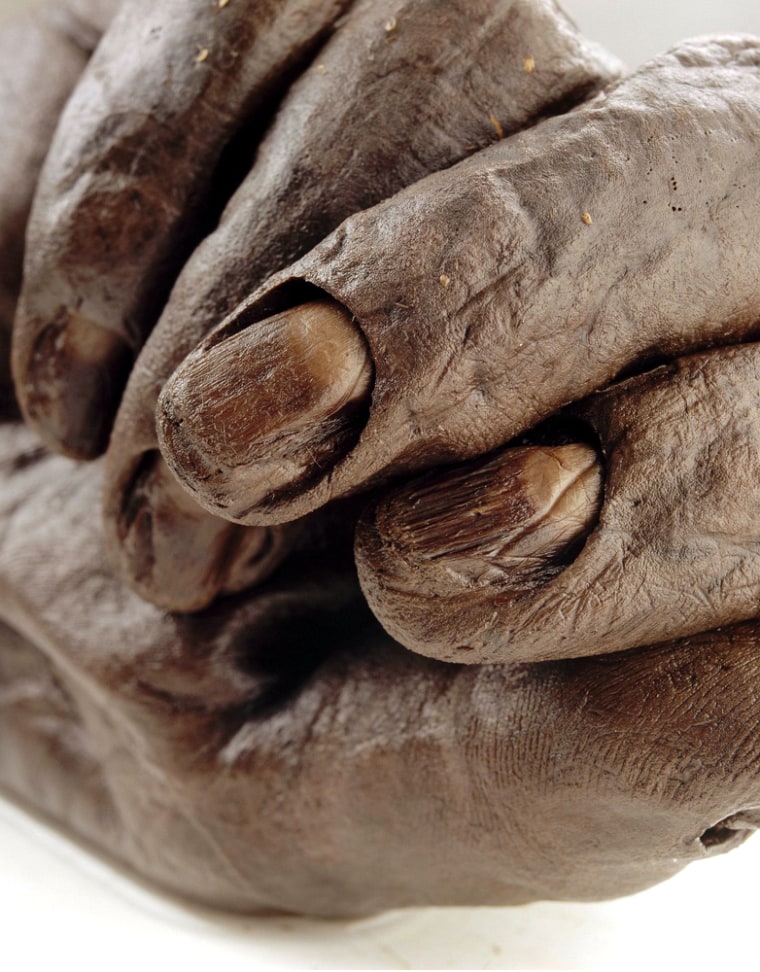This captivating image may appear to depict a meticulously carved wooden hand, but it is, in fact, a close-up of a 2,300-year-old Iron Age bog body known as “Old Croghan Man.” This ancient relic, discovered in a bog in Ireland, offers a chilling glimpse into the past and the mysteries of human preservation.

Old Croghan Man is one of the numerous bog bodies found throughout Europe, preserved in the anaerobic conditions of peat bogs. The remarkable state of preservation allows us to observe intricate details, such as the texture and lines on the hand, as if frozen in time.
The discovery of Old Croghan Man has fascinated archaeologists and historians alike, providing valuable insights into the customs and beliefs of the Iron Age Celts. The circumstances surrounding his death and burial remain shrouded in mystery. While some bog bodies show signs of violent deaths, others may have been sacrifices or individuals of high social status.

The preservation of Old Croghan Man’s hand, along with other body parts, is a testament to the unique conditions of the bog environment. The acidic and oxygen-deprived nature of the peat bogs aids in the prevention of decay, resulting in the remarkable survival of soft tissues.
Careful scientific analysis of Old Croghan Man’s remains has contributed to our understanding of the Iron Age culture, shedding light on aspects like diet, health, and even the ancient practices of human sacrifice. These discoveries challenge our preconceptions and offer a glimpse into the complexities of the past.

As we marvel at the intricacies of Old Croghan Man’s hand, we are reminded of the fragile nature of human existence and the power of preservation in unlocking the secrets of history. It encourages us to delve deeper into the enigmatic past, seeking answers in the remnants left behind by our ancestors.
So, behold the astonishing hand of Old Croghan Man—an artifact that bridges the vast expanse of time, connecting us to a world long gone. Let it inspire us to unravel the mysteries of ancient civilizations, to appreciate the intricate tapestry of human history, and to preserve and learn from the treasures that have endured through the ages.